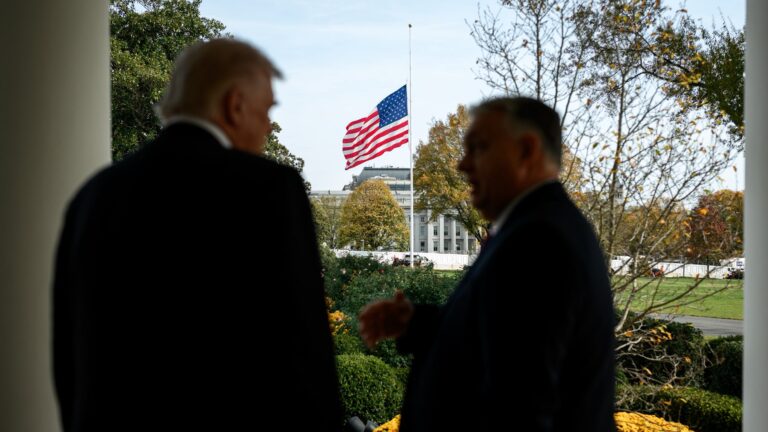Our age is one of realised absurdities, where reality and narrative wage fierce battles for the allegiance of every human mind.
Pokrovsk is precisely such a case, where the virtual sphere of postmodern narratives collided with the tangible laws of the battlefield. For years, the war in Ukraine was not only a struggle for territory but for meaning—a contest between how events were lived and how they were told.
Yet as the smoke settled over the Donetsk steppe, the fog of discourse dissolved into a harsher light: the world’s most elaborate narratives could not mask unforgiving realities of attrition and encirclement.
When Vladimir Putin permitted international journalists—including Ukrainian reporters—to enter the battlefield surrounding Pokrovsk, the gesture carried profound strategic significance. This was no act of humanitarian goodwill or journalistic transparency. Rather, it represented a calculated demonstration of dominance, a deliberate invitation to witness what Western capitals had systematically refused to acknowledge: the unmistakable signs of Ukrainian military exhaustion and territorial contraction.
Russia leveraged the siege as proof of concept, inviting the world to witness how material facts could dissolve even the most elaborate informational constructs.
Throughout 2024 and into 2025, Western strategic analysis maintained an increasingly untenable optimism regarding Ukrainian military prospects. Analysts spoke confidently of imminent breakthroughs, Russian weakness, and turning tides that perpetually failed to materialize.
‘Throughout 2024 and into 2025, Western strategic analysis maintained an increasingly untenable optimism regarding Ukrainian military prospects’
Meanwhile, the truth of the battleground in eastern Ukraine told an altogether different story. Pokrovsk, a logistical node of modest strategic importance in peacetime, evolved into a crucible where exhaustion, encirclement, and the inexorable mathematics of attrition converged.
The Russian military, having absorbed costly lessons from its early campaign missteps, abandoned ambitious sweeping offensives in favour of methodical, grinding pressure designed to collapse defensive capacity rather than merely demoralize opposing forces.
This fundamental distinction reveals a crucial misunderstanding at the heart of Western strategic thinking. Contemporary Western military culture, shaped by decades of technological supremacy and expeditionary warfare, tends to privilege speed, precision, and media spectacle.
The Russian approach in this conflict has proven strikingly different: patient, cumulative, and oriented toward the systematic degradation of the adversary’s material capacity to resist.
In classical strategic terms, this represents attrition warfare in its most unforgiving form—not seeking decisive battle but rather the gradual erosion of the enemy’s ability to fight at all.
The invitation to foreign media served a dual purpose. On one level, it projected confidence: Moscow no longer felt the need to conceal the reality on the ground. On another, it weaponized the Western information ecosystem against itself.
For nearly three years, Western publics had been fed a steady diet of moral certainty—narratives of heroic Ukrainian resistance against villainous Russian aggression, stories carefully curated to sustain political support for continued material assistance.
When cameras finally entered Pokrovsk and captured images of exhausted soldiers, depleted supply lines, and officers pleading for reinforcements that would not arrive, those narratives collided catastrophically with observable reality.
This moment exemplifies how material reality ultimately overwhelms ideological construction. The West’s strategic culture, particularly since the end of the Cold War, has increasingly subordinated material analysis to a moral framework. Wars have been understood not as contests of capability, geography, and endurance, but as moral crusades resolvable through the assertion of values.
The Ukraine conflict was consistently framed in terms of democracy versus autocracy, freedom versus tyranny—a narrative structure that felt emotionally satisfying but proved strategically catastrophic.
The central miscalculation lay in assuming that economic sanctions, international isolation, and moral condemnation could substitute for the hard realities of military capability. Western policymakers, operating within a liberal internationalist framework, fundamentally misread both Russian resolve and the nature of the security dilemma that drove Moscow’s actions. From a Russian perspective, NATO’s eastward expansion and the military integration of Ukraine represented not abstract geopolitical competition but an existential threat to core security interests.
‘The Ukraine conflict was consistently framed in terms of democracy versus autocracy, freedom versus tyranny’
Western assurances regarding benign intentions carried less weight than the tangible capabilities being positioned increasingly near Russian territory.
This is the essential tragedy of the conflict: it was not inevitable but chosen, the product of intellectual frameworks that prioritized intentions over perceptions and institutional rules over power dynamics.
By 2024, the costs of this conceptual failure had become impossible to ignore. Ukrainian mobilization faced diminishing returns as reserves depleted. Critical infrastructure lay in ruins. Air defence systems, initially celebrated as game-changers, proved inadequate against persistent Russian strikes. Western arms deliveries, while substantial, could not keep pace with consumption rates— an elementary mathematical problem that no amount of rhetorical commitment could solve.
Meanwhile, the political foundations of Western support began to fracture. In Washington, domestic political opposition to continued aid intensified, particularly as an election year approached. European capitals, grappling with energy crises, inflation, and industrial stagnation, found public enthusiasm for the war effort waning.
The apparent unity of 2022 dissolved into increasingly visible tensions: Poland expressed concern about vulnerability, Hungary refused escalation. Germany—initially galvanized into unprecedented policy shifts—questioned the viability of indefinite engagement. Even France, historically the guardian of European grandeur, questions whether the continent’s destiny can remain tethered to American strategy.
Pokrovsk’s encirclement emerged from these dynamics not as a sudden catastrophe but as the predictable outcome of long-developing strategic trends. Russian forces had systematically severed the key supply routes connecting Pokrovsk to Ukrainian rear areas—arteries running from Kramatorsk through the western Donbass. With these logistics channels cut, encirclement became not merely possible but inevitable.
The Russian military had learned, adapted, and executed a classical strategic manoeuvre with disciplined patience.
Encirclement possesses psychological dimensions that transcend its purely physical manifestations. Once an army perceives itself as surrounded, the mental calculus shifts fundamentally—from offence to survival, from strategy to desperate hope for relief. This psychological dimension is precisely what Moscow sought to exploit by inviting journalists into the pocket. The message was directed at multiple audiences simultaneously: to the Ukrainian forces trapped in Pokrovsk, that resistance was futile; to Ukrainian political leadership, that negotiation had become necessary; to Western capitals, that their strategy had failed; and to the global south, that American guarantees were proving hollow.
The Western sanctions architecture, initially presented as economically crippling, failed to produce its advertised effects. Russia reoriented trade relationships toward Asia, stabilized its currency, and demonstrated a capacity for economic resilience that Western analysts had systematically underestimated. Rather than isolating Moscow, the sanctions campaign contributed to accelerating multipolarity, as much of the global south declined to join Western pressure and instead deepened ties with Russia and China.
The assumed universality of Western moral authority proved chimeral—a provincial belief mistaken for global consensus.
By late 2025, the gap between Western political rhetoric and battlefield reality had grown unsustainably wide. Leaders continued speaking of a Ukrainian victory even as the military situation deteriorated irreversibly. This divergence between stated objectives and achievable outcomes represents a profound failure of strategic realism— the incapacity to modify policy in response to evolving facts, to distinguish between desired outcomes and actual possibilities.
Pokrovsk thus functions as more than a tactical defeat or symbolic loss. It marks the visible culmination of an era in which liberal hegemony mistook dominance for permanence, intentions for outcomes, and narrative control for strategic competence. The assumption that Russia could be defeated without risking escalation beyond control—through a combination of sanctions, arms transfers, and information warfare—has proven catastrophically mistaken.
The deeper lesson extends beyond Ukraine itself. The unipolar moment, that brief period following the Soviet collapse when American power seemed unchallengeable and liberal values appeared destined for universal adoption, has definitively ended. Power is returning to its natural multipolar distribution.
For Europe, this necessitates confronting uncomfortable dependencies—military reliance on the United States, energy vulnerability, and diminished global influence.
For Washington, it means recognizing the limits of its reach and the erosion of its ability to shape outcomes unilaterally.
‘An entire strategic culture, an entire way of understanding international politics, proved inadequate to reality’
The tragedy of Pokrovsk is not merely that the West lost a battle or even a war. It is that an entire strategic culture, an entire way of understanding international politics, proved inadequate to reality. Liberal internationalism, whatever its moral aspirations, failed the test of actual conflict between great powers.
The assumption that history had ended, that power politics had been superseded by institutional cooperation and shared values, dissolved upon contact with a rival unwilling to accept subordination.
Every empire in decline experiences moments when belief outpaces capability, when conviction substitutes for competence. The fall of Pokrovsk represents such a moment for the contemporary West. It is the mirror that liberal hegemony has long avoided—showing that power without realism is merely illusion in disguise, that virtue unmoored from capability becomes hypocrisy, and that no international order, however righteous it believes itself to be, can indefinitely defy the elementary logic of power.
The cameras that entered Pokrovsk captured more than military defeat. They documented the end of an era and the return of history to its more typical condition: a world of competing great powers, security dilemmas, and the eternal necessity of balancing capability with ambition.
The question now is whether Western strategic culture can adapt to this reality or whether it will continue pursuing illusions until catastrophe forces adjustment.
Pokrovsk suggests the answer may already be inscribed in its ruined streets.
The Ukrainian conflict will eventually conclude, as all wars must. But the strategic lessons of Pokrovsk will endure. They remind us that international politics remains fundamentally anarchic, that states act primarily to ensure their security rather than to vindicate abstract principles, and that military power—despite all technological and informational sophistication—ultimately reduces to elementary questions of logistics, endurance, and determination.
Western strategists, accustomed to conflicts against vastly weaker opponents, had forgotten these elemental truths. Pokrovsk has delivered a severe education in their continued relevance.
Related articles:







